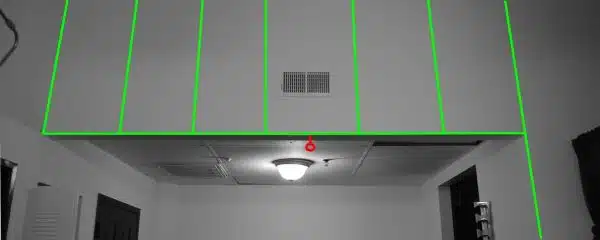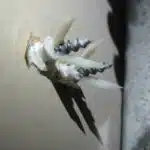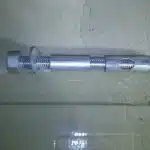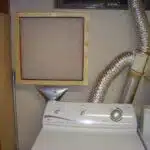As a certified furniture installation technician, it is my duty to ensure that your hanging chair is installed safely and securely. Hanging chairs are a popular addition to any outdoor or indoor space, providing comfort and relaxation with their unique design. However, improper installation can lead to serious injury or damage to property.
Before beginning the installation process, it is important to carefully read the manufacturer’s instructions and follow them precisely. It is also crucial to assess the location where the hanging chair will be installed, ensuring that it can support the weight of the chair and its occupant. In this article, we will discuss how to safely install a hanging chair, covering key factors such as selecting a suitable location, inspecting hardware and materials, and properly securing the chair for optimal safety.
Importance Of Proper Installation
Proper installation of a hanging chair is crucial to ensure safety and enjoyment. The importance of proper installation cannot be overstated, as it can prevent accidents and injuries. Hanging chairs are designed to support the weight of an individual while suspended in mid-air, which makes it necessary that they are installed correctly. If not, the chair could break or fall, causing harm to the user.
One common mistake people make when installing hanging chairs is failing to check the weight capacity of the hardware used for installation. The weight capacity should be checked against the user’s weight to avoid overloading the hardware. Another error is using weak or inappropriate materials for installation, such as flimsy hooks or ropes that are not rated for outdoor use. Such materials may cause the chair to detach from its support or snap during use.
Proper installation of a hanging chair requires careful attention to detail and adherence to manufacturer instructions. Failing to do so can lead to accidents and injuries. It is important to avoid common mistakes by ensuring that appropriate hardware is used and by following manufacturer instructions closely. In the next section, we will discuss how reading manufacturer instructions can help with safe installation of a hanging chair.
Reading The Manufacturer’s Instructions
It is important to understand the instructions provided by the manufacturer before installing a hanging chair. These instructions contain important safety information and guidelines that must be followed to ensure proper installation. Failure to follow these instructions can result in serious injury or damage to property.
One of the most important aspects of proper installation is having the proper tools and equipment. This may include a drill, level, measuring tape, and appropriate hardware such as screws and anchors. Using the wrong tools or hardware can compromise the integrity of the installation and lead to safety hazards.
To ensure a safe and secure installation, it is crucial to have a thorough understanding of the instructions provided by the manufacturer, as well as using proper tools and equipment. Taking shortcuts or improvising during installation can result in serious consequences. By following these guidelines, you can be confident that your hanging chair will be installed safely and securely for optimal enjoyment.
- Make sure to have all necessary tools and equipment before beginning installation
- Read through all manufacturer’s instructions thoroughly before starting
- If unsure about any step in the process, refer back to the instructions or seek professional help
- Double-check all measurements and ensure everything is level before fully installing – Securely fasten all bolts, screws, and other hardware to ensure the equipment is stable and safe to use.
Assessing The Location For Installation
Location Assessment
Before installing a hanging chair, it is important to assess the location where it will be placed. The area should be sturdy enough to support the weight of the chair and its occupant. It is recommended to install the chair in an area with a solid ceiling beam or joist that can support at least 300 pounds.
In addition, consider the space around the intended placement of the chair. Ensure there is enough room for swinging without hitting any walls or furniture. It is also important to check if there are any obstacles overhead, such as light fixtures or ceiling fans, which may interfere with the chair’s movement.
Weight Distribution
Another crucial aspect is weight distribution. The weight capacity of a hanging chair depends on its design and construction. However, it is essential to distribute weight evenly across all hanging points for safety purposes.
It is recommended to use a mounting kit designed specifically for suspended chairs and follow manufacturer instructions carefully. This will ensure proper installation and reduce any risk of accidents caused by improper weight distribution.
Moving forward, we will discuss weight capacity considerations when choosing a hanging chair for your home or outdoor space. By assessing location and ensuring proper weight distribution, you can enjoy your new hanging chair safely and comfortably.
Weight Capacity Considerations
When installing a hanging chair, it is essential to consider its weight capacity. The maximum weight of the chair should be taken into account to avoid any accidents or damage to the chair. The weight capacity is usually specified by the manufacturer and should not be exceeded under any circumstances.
Weight distribution is another critical consideration when installing a hanging chair. It is recommended that the weight of the person sitting on the chair should be evenly distributed across all parts of the chair. If there is uneven weight distribution, there may be an increased risk of falling or tipping over.
To ensure a safe installation of your hanging chair, here are some additional tips:
- Use heavy-duty hardware designed for your specific type of hanging chair
- Choose a location that can support the maximum weight capacity of your chair
- Ensure that all components are securely fastened before use
- Check for signs of wear and tear in both the hardware and materials regularly
- Follow all manufacturer instructions carefully
As a certified furniture installation technician, it is my duty to ensure that all furniture installations are done safely and correctly. By following these guidelines, you can enjoy your hanging chair without worrying about any potential accidents caused by improper installation.
Transitioning to our next section, inspecting hardware and materials before installation is crucial to ensuring a safe and enjoyable experience with your hanging chair.
Inspecting Hardware And Materials
As we have discussed in the previous section, weight capacity is a crucial factor to consider before installing a hanging chair. However, checking materials and inspecting construction are equally important to ensure the safety and longevity of your installation.
Before proceeding with any installation work, it’s essential to check the materials used in the manufacturing of your hanging chair. Ensure that it is made from high-quality materials that can withstand the weight capacity stated by the manufacturer. Inspect for any defects or damage such as cracks, tears, or fraying on the fabric or ropes.
Inspecting construction is also necessary to guarantee that your hanging chair can carry its maximum weight capacity. Check for any loose knots, worn-out hardware, or weak points in the frame that may cause instability when in use. Properly inspecting your hanging chair will help prevent any accidents or injuries caused by equipment failure.
Now that we have covered material and construction inspection let us proceed with choosing the right hanging hardware to complete our installation safely and properly.
Choosing The Right Hanging Hardware
When choosing the right hanging point for a hanging chair, it is important to consider the weight of the chair, the type of ceiling it is being installed into, and the type of mount that is best suited for the application. When selecting the appropriate hardware, it is important to use hardware that is rated for double the weight of the chair to ensure the chair is safely supported. Additionally, it is recommended to use lag shields and molly bolts when hanging the chair into drywall, and toggle bolts when installing into wood or concrete ceilings. Finally, it is important to use appropriate mounting hardware that is corrosion resistant.
Choosing The Right Hanging Point
As a certified furniture installation technician, it is crucial to know the proper way of choosing the right hanging point for a hanging chair installation. Choosing the height is the first step in determining where to hang your chair. The ideal height should be around 18-24 inches off the ground, allowing enough space for comfortable seating while still being low enough not to cause any accidents. Finding the stud is also essential when choosing the right hanging point as it will provide maximum support and stability. A stud finder can be used to locate a stud behind a wall or ceiling.
Determining the angle is another vital factor in choosing the right hanging point for your chair. The angle should be at least 45 degrees from horizontal, which ensures that the weight of the chair is distributed evenly across all points of contact with its suspension hardware. Measuring the distance between two points is also necessary when deciding on where to hang your chair. This measurement will ensure that there is enough clearance for movement while sitting in your chair and prevents any unwanted accidents.
In conclusion, choosing the right hanging point for your hanging chair involves several factors such as determining the height, finding a stud, determining an angle and measuring distance. As an installation technician, it’s essential to consider these factors when installing a hanging chair to ensure maximum support and stability while providing comfort and safety for users who will enjoy using this piece of furniture in their homes or outdoor spaces.
Selecting The Appropriate Hardware
As a certified furniture installation technician, selecting the appropriate hardware is crucial in ensuring the safety and stability of a hanging chair. There are different types of hardware that can be used for hanging chairs, such as hooks, chains, and ropes. When choosing the right hardware, it is essential to consider the weight distribution of the chair and ensure that it can support the weight of users without compromising their safety.
Hooks are commonly used in hanging chair installations as they provide maximum support and stability. When installing hooks, it is crucial to use heavy-duty screws or bolts to ensure that they are securely anchored to the ceiling or wall. Chains and ropes can also be used as suspension hardware but require careful consideration of weight distribution to prevent them from breaking or fraying over time.
Proper selection and installation of hardware are critical in ensuring that a hanging chair provides comfort and safety for its users. As an installation technician, it is important to choose high-quality materials that can withstand the weight of users while providing maximum support and stability. By carefully considering the weight distribution and type of hardware used in hanging chair installations, users can safely enjoy this piece of furniture in their homes or outdoor spaces.
Preparing The Area For Installation
Choosing the Right Spot is crucial to ensure the safety and comfort of a hanging chair. The first step in preparing the area for installation is to identify a location that can support the weight of the chair and its occupant. It is essential to choose a spot with sturdy overhead support, such as a ceiling beam or a tree branch with sufficient thickness.
Clearing the Area around the chosen spot is equally important before installing a hanging chair. Ensure there are no obstacles near or below the installation site that can cause harm or impede movement. Clear away any furniture, plants, or other objects that may obstruct access to the chair, making it easy to get in and out.
Once you have selected an appropriate location and cleared the surrounding area, you can proceed with installing your hanging chair. However, before doing so, make sure you take all necessary precautions to ensure your safety while working on this project. With these preparations in place, you will be ready to move on to Assembling The Chair and completing your installation safely and efficiently.
Assembling The Chair
Assembly Tips:
Before assembling the hanging chair, it is important to read the manufacturer’s instructions carefully. Make sure you have all the necessary tools and hardware before starting. Take note of any weight limitations or safety precautions specified in the manual.
To begin assembly, lay out all the pieces in a clear area. Identify each part and ensure that they are free from any defects or damages. Start with attaching the armrests to the seat frame using screws and bolts provided. Next, attach the backrest to the seat frame.
Safety Precautions:
When assembling a hanging chair, it is crucial to take safety precautions seriously. Ensure that your workspace is free from any hazards or obstacles that could cause accidents during assembly. Wear appropriate safety gear such as gloves and eye protection when working with tools.
Additionally, make sure you assemble the chair on a stable surface where it will not tip over during use. Avoid placing it near windows or doors where high winds could cause it to sway dangerously. Lastly, ensure that all screws and bolts are tightened securely before use to prevent any accidents.
Transition:
Now that we have assembled the hanging chair safely, it’s time to move onto attaching the hanging hardware for proper installation.
Attaching The Hanging Hardware
After assembling the chair, it’s time to attach the hanging hardware. Different hanging hardware options are available in the market, such as S-hooks, eye bolts, and chains. However, it’s crucial to choose the right one based on your ceiling structure and weight-bearing capacity. For instance, if you have a wooden beam or joist, use eye bolts with at least 500 lbs. weight capacity. On the other hand, if your ceiling is made of drywall or plaster, use toggle bolts with at least 250 lbs. weight capacity.
Once you’ve chosen the appropriate hanging hardware, ensure that it’s securely attached to the ceiling before hanging the chair. It’s recommended to use a stud finder to locate the beams precisely before drilling holes for eye bolts or screws. After attaching the hardware, test its strength by pulling on it gently but firmly before putting any weight on it.
Tips for adjusting the chair height are essential for ensuring comfort and safety while using it. To adjust its height correctly, raise or lower the chain links on both sides equally until you reach your desired height. Avoid swinging too high as this can cause instability and lead to accidents. Always check for levelness by placing a spirit level across both sides of the chair frame and making necessary adjustments until it’s perfectly balanced.
In summary, choosing appropriate hanging hardware options is critical for ensuring safety when installing a hanging chair. Tips for adjusting its height are also vital in achieving comfort while using it. Finally, checking for levelness ensures that you enjoy your new hanging chair without any accidents or discomforts arising from incorrect installation procedures.
Checking For Levelness
After choosing the perfect spot for your hanging chair, it is essential to check for levelness before proceeding with installation. Levelness ensures that the chair will not wobble or tip over during use, which can lead to accidents and injuries.
To check for levelness, use a spirit level tool. Place the tool on the seat of the hanging chair and adjust its position until it shows that the seat is perfectly horizontal. Also, ensure proper alignment by measuring angles from different perspectives to make sure that it is symmetrical.
Checking for levelness is a crucial step in installing a hanging chair safely. It may take some extra time and effort, but it ensures optimal safety during use. Once you have confirmed that your hanging chair is level, you can proceed with securing it for optimal safety.
Securing The Chair For Optimal Safety
After finding the perfect location for your hanging chair, it’s important to ensure that it is installed securely to avoid any accidents. One important factor to consider is the swing mechanism of the chair. It’s crucial to choose a swing mechanism that is sturdy and durable enough to support the weight capacity of the chair and its occupants. The swing mechanism should also be rust-resistant if it will be exposed to outdoor elements.
Another key factor in securing a hanging chair is determining the proper suspension height. The suspension height refers to the distance between the ceiling or supporting structure and the bottom of the chair when it’s fully hung. The optimal suspension height varies depending on several factors, including the weight capacity of the chair, as well as your own height and weight. Generally, a suspension height of around 18-24 inches will provide a comfortable sitting experience while still maintaining safety.
To further ensure safety, it’s recommended to install additional hardware such as heavy-duty hooks and chains or ropes rated for at least twice the weight capacity of your hanging chair. These items should also be checked periodically for wear and tear or any signs of weakness.
Testing the stability of your installation is crucial before using your new hanging chair. In order to do so, sit in your hanging chair with both feet firmly on the ground and gently sway back and forth. If you feel any wobbling or instability, immediately stop use until you can make necessary adjustments or consult with a professional furniture installation technician. Remember, investing time in properly securing your hanging chair will provide peace of mind and prevent potential injuries or damage to property down the line.
Testing The Stability Of The Installation
To ensure optimal safety when installing a hanging chair, it is important to secure it properly. But securing the chair is not enough. Testing its stability is equally crucial in preventing accidents and ensuring a comfortable experience for the user. Stability testing should be done before sitting in the chair, as well as periodically during use.
One way to test the stability of the installation is by checking weight distribution. The weight of the person sitting on the chair should be evenly distributed across all suspension points. If one point bears more weight than others, it can cause the chair to swing unevenly or even tip over. This can be avoided by adjusting the height of each suspension point until a perfect balance is achieved.
Another factor to consider when testing stability is the quality of hardware used in installation. Low-quality hardware can weaken over time, causing instability and posing risk to users. It is essential to use high-quality hardware that suits your ceiling or stand’s weight capacity and type. Maintenance checks should also be done regularly to identify any wear and tear and prevent accidents.
Proper stability testing ensures that your hanging chair provides safe and enjoyable relaxation for years to come. However, even with proper installation and maintenance, it is important to pay attention to care for your hanging chair regularly. The next section will provide tips on how you can maintain your hanging chair’s quality and prolong its lifespan while ensuring safe usage for yourself and others who may use it in the future.
Maintenance And Care For Your Hanging Chair
As a certified furniture installation technician, I highly recommend taking proper care of your hanging chair to ensure its longevity. Regular maintenance can also prevent accidents caused by wear and tear. Here are some essential tips to keep in mind:
- Cleaning instructions: It’s essential to clean your hanging chair regularly. Use a soft-bristled brush or cloth to remove dirt, dust, and debris from the surface. For heavy stains, use mild soap and warm water to gently scrub the affected area. Avoid using harsh chemicals that can damage the fabric or finish.
- Weather protection: If you plan on keeping your hanging chair outside, it’s crucial to protect it from the elements. Exposure to rain, sun, and wind can cause significant damage over time. Consider investing in a weather-resistant cover or storing the chair indoors during inclement weather conditions.
- Inspection: Regularly inspecting your hanging chair is critical for identifying any signs of damage or wear and tear. Check for loose screws, frayed ropes or chains, bent hooks or brackets, and any other visible defects that may compromise its safety.
By following these simple maintenance tips, you can extend the life of your hanging chair while ensuring its safety for years to come. However, even with proper care, issues may arise during installation that require troubleshooting. In the next section, we’ll discuss common installation problems and how to resolve them effectively.
Troubleshooting Common Installation Issues
Like any piece of furniture, a hanging chair requires proper installation in order to ensure safety and stability. In the previous section, we discussed maintenance and care for your hanging chair, which can help prolong its lifespan. Now, we will move on to troubleshooting common installation issues.
One important factor to consider when installing a hanging chair is adjusting the height. The height of your hanging chair should be adjusted based on your personal preferences and needs. If it is too high, you may find it difficult to get in and out of the chair; if it is too low, you may not be able to swing comfortably. It is important to take measurements of the space where you plan to hang your chair and adjust accordingly.
Another crucial aspect of installation is choosing the right anchor. The type of anchor you choose will depend on the type of ceiling or structure from which you plan to hang your chair. For example, if you are installing your hanging chair indoors, you may need a different type of anchor than if you were installing it outdoors. It is important to research and select the appropriate anchor that will provide enough support for both the weight of the chair and any additional weight that may be added when someone sits in it.
If you encounter any issues during installation or are unsure about how to proceed safely, seeking professional help may be necessary. A certified furniture installation technician can assist with ensuring proper installation and identifying any potential hazards that could compromise safety. Remember: taking precautionary measures during installation can prevent accidents in the future and ensure that your hanging chair remains a comfortable and enjoyable addition to your home or outdoor space.
Seeking Professional Help If Needed
When to hire a professional for hanging chair installation is determined by several factors. If you are uncertain about the strength and stability of the ceiling, wall or tree branch where you intend to hang your chair, it is advisable to seek professional help. A certified furniture installation technician can assess your space and recommend the best way to install your chair safely.
Another reason to hire a professional is when you lack the necessary tools and equipment for hanging chair installation. Installing a hanging chair requires specific hardware such as bolts, screws, and drill bits. These tools must be used correctly to ensure that your chair is securely fastened in place. If you do not have them, hiring a professional installer may be your best option.
DIY safety precautions are essential for those who want to install their hanging chairs themselves. First, make sure that the area where you intend to hang the chair is free from any obstructions that could hinder its movement. Second, read and follow the manufacturer’s instructions carefully. Third, always use appropriate hardware and ensure that it is installed correctly. Fourth, check that all connections are tight before using the chair.
- Hire only certified furniture installation technicians.
- Use appropriate hardware.
- Follow manufacturer’s instructions carefully.
- Check all connections before using the hanging chair.
In summary, installing a hanging chair can be done by yourself but it comes with risks if not done properly. Hiring a professional will ensure that your chair is installed safely and correctly while DIY safety precautions will minimize risks during self-installation. Keep in mind that safety should always come first when it comes to installing anything at home or anywhere else.
Conclusion
As a certified furniture installation technician, proper installation of a hanging chair is crucial for the safety and comfort of its users. It is imperative to carefully read the manufacturer’s instructions and assess the location for installation, taking into consideration weight capacity and inspection of hardware and materials. Testing the stability of the installation is also necessary before use.
It is essential to perform regular maintenance and care for your hanging chair to ensure its longevity and safety. Troubleshooting common installation issues may be necessary, but seeking professional help should always be considered if needed. One anticipated objection may be that installing a hanging chair seems like a simple task that can be done without much thought or preparation. However, this mindset can lead to dangerous situations that could result in injury or damage to property.
In conclusion, properly installing a hanging chair requires attention to detail and careful consideration of various factors. Taking the time to follow manufacturer’s instructions, assessing location for installation, inspecting hardware and materials, testing stability before use, performing regular maintenance and troubleshooting common issues are all important steps in ensuring safe use of your hanging chair. As a certified furniture installation technician, I emphasize the importance of proper installation techniques to avoid any potential hazards or problems down the line.
Image Credits
- “Hanging a chair” by sparr0 (featured)





























